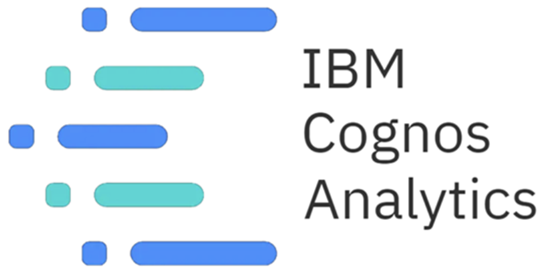My favorite things …
Towfiqa Yasmeen, Lead Offering Manager, IBM Cognos Analytics on Cloud

You could say Towfiqa is one of the few people who truly knows IBM Cognos Analytics inside out — she’s worked with the product as a part of development, sales and services. She laughs and says, “I’m a bit of unicorn in that sense. I’ve written reports and created metadata models, and brought Cognos down on 2 p.m. on a Sunday because Db2 is being updated. I’ve not only seen it all, I’ve done it all.” She started her career as a software engineer working in R&D, developing new Cognos features such as dynamic query mode. She then moved on to work in both sales and consulting, gaining real-world insight about the business needs of Cognos users and the mission-critical nature of what Cognos does for organizations.
“Being hands-on-keyboards on Cognos customer sites was a real eye-opener,” says Towfiqa. “I saw how the product I helped build and sell was actually being used. I got a really clear sense of how to create analytics content that was robust and maintainable, with client usability at top of mind.”
“I’ve always had a curiosity for how things work, and that’s why I became an engineer,” says Towfiqa. “I wanted to build things. And I thought you build great products by becoming an engineer. Getting the opportunity to be in the customer’s shoes and understanding their pain points has helped me realize you build great products by listening to your customers. The value is in what gets used, not in what gets built.” she says.
It was this realization that led Towfiqa to join the product management team for Cognos Analytics, in 2019. “I was really excited to join the IBM Cloud team.” says Towfiqa. In fact, whether a customer is interested in a SaaS, IaaS, or PaaS implementation, we have the flexibility to do any combination of the three with Cognos Analytics.” she says.
Towfiqa’s favorite things about IBM Cognos Analytics on Cloud
“With the new 11.1 Cognos on Cloud architecture we’re able to do a lot of new things for Cognos customers,” says Towfiqa. “Using docker containers and the Kubernetes orchestration engine, we’ve created a best-in-breed SaaS solution that’s built for availability and reliability.”
Her first favorite thing is containerization. “Containerization allows us to break Cognos into smaller parts and decouple it from the operating system,” says Towfiqa. “This lets us talk to the different parts of Cognos, allowing for the alerting, monitoring and logging of Cognos parts at the level of Kubernetes pods.”
What does this mean for customers? “Previously, when Sally logged onto Cognos in the morning and realized it went down at some point the night before, she would contact IT, then go on an extended coffee break until Cognos was brought back online,” says Towfiqa. “Now, on the cloud, we are able to monitor Cognos, get alerts when services are down, and engage our CloudOps folks to get the system back online. So, when Sally logs in in the morning, the system is up and running. I’ve seen a lot of Cognos deployments in the field and no one has this on premise today. It comes out of the box with Cognos Analytics on Cloud,” she says.
“My second favorite thing about Cognos Analytics on Cloud is the replication and self-healing mechanism built into Kubernetes,” says Towfiqa. “Imagine Kubernetes is the ‘maestro’ of the Cognos orchestra. It knows which parts of the system should be up at any given time. The replica-set allows us to run duplicate Cognos services, so if one goes down there are others to handle the workload. And when a pod becomes unresponsive, Kubernetes automatically brings it back up — essentially self-healing the system. What used to be an outage is no longer an outage. If Cognos goes down on-premise it requires a human being to log in, determine the issue and then restart the server. I’ve done it myself on many occasions. Now, with Cognos Analytics on Cloud it’s all taken care of automatically. It’s an out-of-the-box feature,” says Towfiqa.
“The last favorite thing I’ll mention is scaling,” says Towfiqa. “With containerized Cognos we are able to scale horizontally, whereas Cognos on-premise must be scaled vertically. I’ve seen a customer buy Cognos for 100 people, and everyone loves it, and now 200 people are on the system built for 100. Scaling for customers previously meant complicated and time-consuming hardware acquisition, and work from the team to implement. With Cognos Analytics on Cloud you simply purchase more capacity, and CloudOps adds it to your environment with zero downtime — like we did recently for a European retail customer who needed to increase capacity for Black Friday,” she says. “You can simply add firepower as your organization needs — it’s kind of unthinkable for on-prem folks,” she laughs.
What’s next for Cognos?
The year ahead promises more improvements for Cognos Analytics on Cloud. “We’re improving the Manage UI, making it easier to put images, fonts, and drivers directly in your Cognos environment without intervention from IT,” says Towfiqa. “We’re making it more self-serve and reducing the number of CA restarts required.”
“We’re also working to break the Cognos Kubernetes pods into even smaller pieces,” says Towfiqa. “Imagine a world where just because the query service is down, your report service doesn’t have to be. As a longtime Cognos user, this has immense promise and I’m excited to see what we can deliver to customers.”
Check out Towfiqa's Cognos Analytics on Cloud webinar. She’ll help you understand the different Cognos Analytics on Cloud options and determine which is best suited for you and your organization. Post any questions for the presenters in our discussion here.
Questions about Cognos Analytics on Cloud? Are there enhancements or features you’d like to see? Reach out to @TOWFIQA YASMEEN on the Community or fill out a Request for Enhancement to get your voice heard.

#CognosAnalyticswithWatson